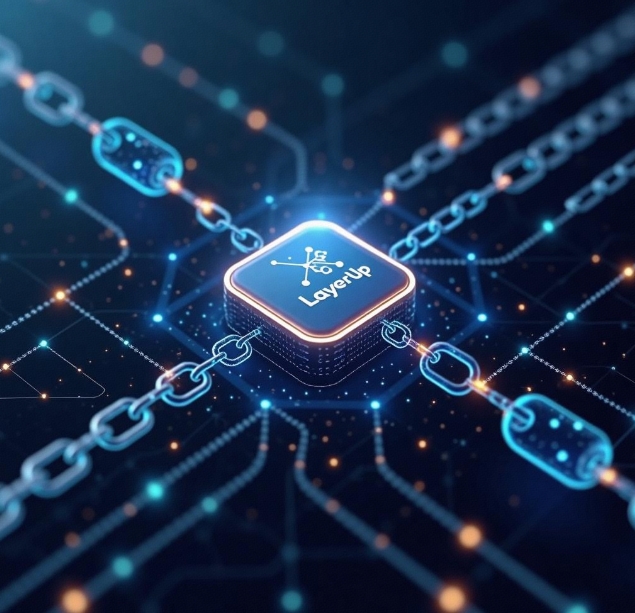How to optimize gas fees in Web3 development? Tips for reducing costs.
- latest articles
- 1.DApp Development & Customization: Merging Diverse Market Needs with User Experience 2.Analysis of the Core Technical System in DApp Project Development 3.How to achieve cross-chain interoperability in Web3 projects? 4.How does the tokenization of points reconstruct the e-commerce ecosystem? 5.How to Set and Track Data Metrics for a Points Mall? 6.What is DApp Development? Core Concepts and Technical Analysis 7.Inventory of commonly used Web3 development tools and usage tips 8.Development of a Distribution System Integrated with Social E-commerce 9.Six Key Steps for Businesses to Build a Points Mall System 10.What is DApp Development? A Comprehensive Guide from Concept to Implementation
- Popular Articles
- 1.Future Trends and Technology Predictions for APP Development in 2025 2.Analysis of the DeFi Ecosystem: How Developers Can Participate in Decentralized Finance Innovation 3.From Zero to One: How PI Mall Revolutionizes the Traditional E-commerce Model 4.DAPP Development | Best Practices for Professional Customization and Rapid Launch 5.Recommended by the Web3 developer community: the most noteworthy forums and resources 6.How to Develop a Successful Douyin Mini Program: Technical Architecture and Best Practices 7.From Cloud Computing to Computing Power Leasing: Building a Flexible and Scalable Computing Resource Platform 8.Shared Bike System APP: The Convenient Choice in the Era of Smart Travel 9.How to Create a Successful Dating App: From Needs Analysis to User Experience Design 10.From Design to Development: The Complete Process of Bringing an APP Idea to Life
Web3 is part of the decentralized internet, and its infrastructure relies on blockchain technology. Due to the decentralized nature of blockchain, transactions require confirmation through the consensus of miners or validators, which also leads to the issue of Gas fees in the Web3 environment. Gas fees typically refer to the costs required to execute transactions, smart contract operations, or publish certain data on Ethereum or other blockchains. With the widespread development of Web3 applications, optimizing Gas fees and reducing costs has become a significant challenge for both developers and users.
This article will delve into how to optimize Gas fees in Web3 development, providing effective techniques and strategies to help developers reduce costs while improving the efficiency of blockchain applications.
1. Understanding the Principles of Gas Fees
Before discussing optimization techniques in depth, we first need to understand how Gas fees are calculated. Gas fees on Ethereum and other blockchain networks consist of two parts: Gas Limit and Gas Price.
Gas Limit: The maximum Gas consumption for each transaction or smart contract operation. The Gas Limit is typically related to the complexity of the operation; for example, calling a complex smart contract function requires more Gas, while a simple transaction requires less.
Gas Price: The fee per Gas unit that the user is willing to pay, usually denominated in Ether (ETH). The Gas Price determines the priority of the transaction; the higher the Gas Price, the faster the transaction is typically confirmed.
Gas fees are calculated by multiplying the Gas Limit by the Gas Price. Understanding the composition of Gas fees allows developers to optimize transaction costs by adjusting these parameters.
2. Reducing Smart Contract Complexity
The complexity of smart contracts directly affects Gas consumption. More complex contracts typically require more computational and storage resources, leading to higher Gas fees. Therefore, simplifying the design and logic of smart contracts is an important means of optimizing Gas fees.
Optimize Code Efficiency: When writing smart contracts, avoid unnecessary loops and nested functions. Use simple control structures and reduce the number of state modifications. Each modification of the contract state consumes more Gas, so reducing state modification operations will help save costs.
Reduce Storage Consumption: Storing data on the blockchain is very expensive, especially on the Ethereum network. Therefore, try to avoid storing large amounts of data on the blockchain. Use decentralized storage networks like IPFS to store large files and data externally, while only storing necessary information, such as file hashes, on the blockchain.
Combine Operations: If a smart contract contains multiple function calls, try to combine multiple operations into a single transaction. Each individual transaction consumes Gas, so batch executing operations can significantly reduce overall Gas fees.
3. Using Layer 2 Solutions
Layer 2 (L2) solutions are technologies proposed to address the scalability issues of blockchain networks. Common L2 solutions include Optimistic Rollups and zk-Rollups. They reduce the burden on the main chain (Layer 1) by moving large amounts of transaction data to the second layer for processing, thereby lowering transaction fees.
Optimistic Rollups: This technology batches transaction data into a new block and then submits it to the main chain for validation. Since most computational work is done on L2, Optimistic Rollups can significantly reduce Gas fees and increase transaction processing speed.
zk-Rollups: Similar to Optimistic Rollups, zk-Rollups also move computational work to the second layer, using zero-knowledge proofs (zk-SNARKs) to ensure data validity. zk-Rollups can further reduce data transmission overhead, providing higher efficiency and lower fees.
Using Layer 2 technology can greatly reduce the operational costs of Web3 applications, making operations on high-Gas networks like Ethereum more economical.
4. Using Gas Optimization Tools
With the continuous development of Web3 applications, many tools and services have emerged to help developers better optimize Gas fees. These tools typically provide functions such as Gas estimation, transaction optimization, and fee management, helping developers and users make smarter decisions.
Gas Estimation: Before executing a transaction, many blockchain wallets and platforms offer Gas fee estimation features to help users predict the cost of executing transactions. Developers can use these tools to optimize the Gas consumption of contracts, enabling more precise control over Gas fees during execution.
Automated Gas Optimization: Some platforms and tools, such as GasToken, "store" Gas for smart contract execution by purchasing and storing Gas in advance when fees are low, allowing it to be used during peak Gas periods, thereby reducing costs during high-Gas times.
Gas Fee Token: Some projects offer specialized Gas Fee Tokens, allowing users to prepay fees or lock in fees when Gas prices are low. These tools and mechanisms help users mitigate the impact of volatile Gas fees on transaction costs.
5. Precise Control of Gas Price and Gas Limit
When conducting transactions, precise control over Gas Price and Gas Limit is crucial for reducing Gas fees.
Gas Price Selection: Gas Price can fluctuate significantly under different network conditions. When the network is congested, Gas Price typically rises, increasing costs. If your transaction is not urgent, you can choose a lower Gas Price and wait for the network to be less busy. Many blockchain wallets allow users to manually set the Gas Price, providing greater flexibility.
Dynamic Gas Price Adjustment: Some platforms dynamically adjust the Gas Price based on real-time network conditions, ensuring transactions are confirmed quickly while avoiding excessive fees. Smart contract developers can incorporate mechanisms for automatic Gas Price adjustment to ensure transaction efficiency and cost optimization.
Reasonable Gas Limit Setting: The Gas Limit should not be set too high, as this may lead to unnecessary fee waste. However, it should not be set too low either, as the transaction may fail due to insufficient Gas. Reasonably estimating and adjusting the Gas Limit to avoid overconsumption can effectively reduce costs.
6. Using More Efficient Consensus Mechanisms
The consensus mechanism of a blockchain network directly affects its performance and transaction costs. Ethereum currently uses the Proof of Work (PoW) mechanism, which requires miners to perform complex calculations, leading to higher Gas fees. However, as Ethereum gradually transitions to Proof of Stake (PoS), transaction confirmation times and Gas fees are expected to improve.
PoS Mechanism: Compared to PoW, the PoS mechanism does not require extensive computational resources, so transaction Gas fees are typically lower. Using PoS-based blockchains like Ethereum 2.0 will help further reduce Gas fees.
Other Consensus Mechanisms: Besides Ethereum, other blockchains like Solana and Polygon use different consensus mechanisms, and these networks often offer lower transaction fees. Developers can choose the appropriate blockchain platform based on their application's needs to further reduce costs.
7. User Education and Cost Transparency
While most Web3 application developers can optimize Gas fees using the above techniques, user understanding and choices regarding Gas fees are equally important. Developers can educate users on how to choose the best Gas strategies to reduce unnecessary expenses.
Providing Gas Fee Options: In DApps, developers can offer users choices for Gas fees, such as allowing them to select different transaction speeds or priorities. This way, users can choose to pay lower fees based on their needs while ensuring transactions are completed as required.
Fee Transparency: Providing clear fee explanations and real-time Gas fee displays can help users better understand their transaction costs. This transparency also enhances user trust in the platform.
Conclusion
Optimizing Gas fees not only helps reduce costs for developers and users but also improves the efficiency and usability of Web3 applications. By simplifying smart contracts, leveraging Layer 2 solutions, using Gas optimization tools, and dynamically adjusting Gas fees, developers can significantly lower costs and enhance the user experience. As technology continues to advance, Web3 developers and users will enjoy lower Gas fees and more efficient blockchain applications in the future.
-

How to achieve cross-chain interoperability in Web3 projects?
With the continuous development of WEB3 technology, Web3 has gradually become an···
-

Inventory of commonly used Web3 development tools and usage tips
With the continuous development of blockchain technology, Web3 has become a hot ···
-

Web3 development trend prediction: analysis of future technology directions and application scenarios
With the gradual development of blockchain technology, the concept of Web3 has m···

 Blockchain
Blockchain












